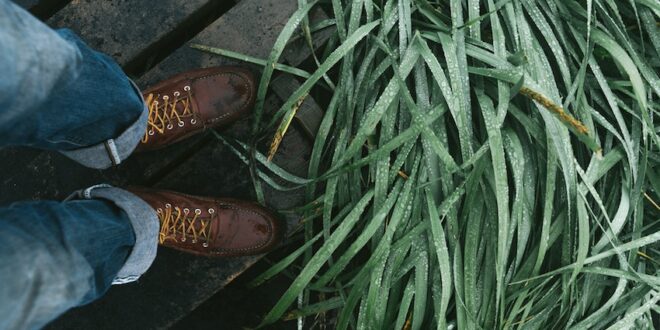Yes, we know it’s spring – and you’re frantic to get out in your garden. But, please, be patient! Spring is just a word. The actual season of spring, at least as it applies to gardens and gardening, doesn’t necessarily arrive on September the 1st. When it does eventually show it’s face, it does so in different parts of the country at different times. What’s more, ‘spring’ sometimes likes to backtrack into winter for a few days (or weeks!) before it finally decides to stay. All of which is why you mustn’t work in (and more importantly, stand on) your garden until the soil has warmed up and the beds have had a chance to dry out. If you don’t follow these fundamental rules, you’ll damage the very soil structure which has the potential to keep your plants healthy.
What is ‘soil structure’?
Soil structure refers to the way particles in the soil are arranged, and it’s as important, if not more so, than the nutrients we feed our garden. That’s because plants require oxygen to grow. Some oxygen is taken in through a plant’s roots, but the oxygen can only reach down to the roots if there is space in the soil for it to seep into and linger.
Imagine a tight ball of clay – it’s quite obvious the particles in it are packed very tightly together. So tightly, there’s very little space for anything other than … well, clay! Now, imagine a loose ball of soil – one that is so crumbly it barely holds together. In this ball of soil, the particles are clearly held together very loosely. That’s because it contains more ingredients that just soil, and some of those extra ingredients include oxygen.
How do plant roots use oxygen?
A plant’s roots take in oxygen via tiny root hairs. This oxygen helps the plant use the food its leaves have made from sunshine. In the process of helping the plant use its food, the plant produces some waste products which it needs to get rid of. The waste products include water and carbon dioxide. These exit the plant through its roots. But they can only do this if there is space in the soil for them to go into – so back we come to the importance of good soil structure.
Keep off!
When our gardens are still wet from winter rain, and we stand on them, we compress the soil, squashing the soil particles tightly together. This crushes the tiny openings that allow oxygen to get in and carbon dioxide and water to get out. What’s more, because the soil particles are so squashed together, air can’t get in to help the garden dry out, which delays our gardening season even further.
The solution
If you garden has soil that is already loose and crumbly, keep off it! When you work in the garden, reach over from the edge. If you really must stand on your garden, spread your weight by working on a wide, slip-proof, non-treated, unpainted board. Better still, keep your garden beds to a maximum width of 1.2 metres, and accessible from both sides. In this way, you can work, even in the middle of the garden, without ever having to stand on the soil.
If your garden is already squashed or clay-ish, wait until as late in spring as possible before loosening it with a garden fork to help it dry out (don’t be tempted to dig deeply or you’ll damage any soil structure you already have). Add plenty of loose, dry compost to the garden to help improve its structure before you pop in your plants.
When gardening, especially in spring, try to ‘think like a plant’. It will remind you to keep off the garden, and help your plants to be as healthy as possible!











Join the Discussion
Type out your comment here:
You must be logged in to post a comment.